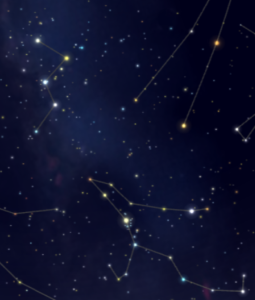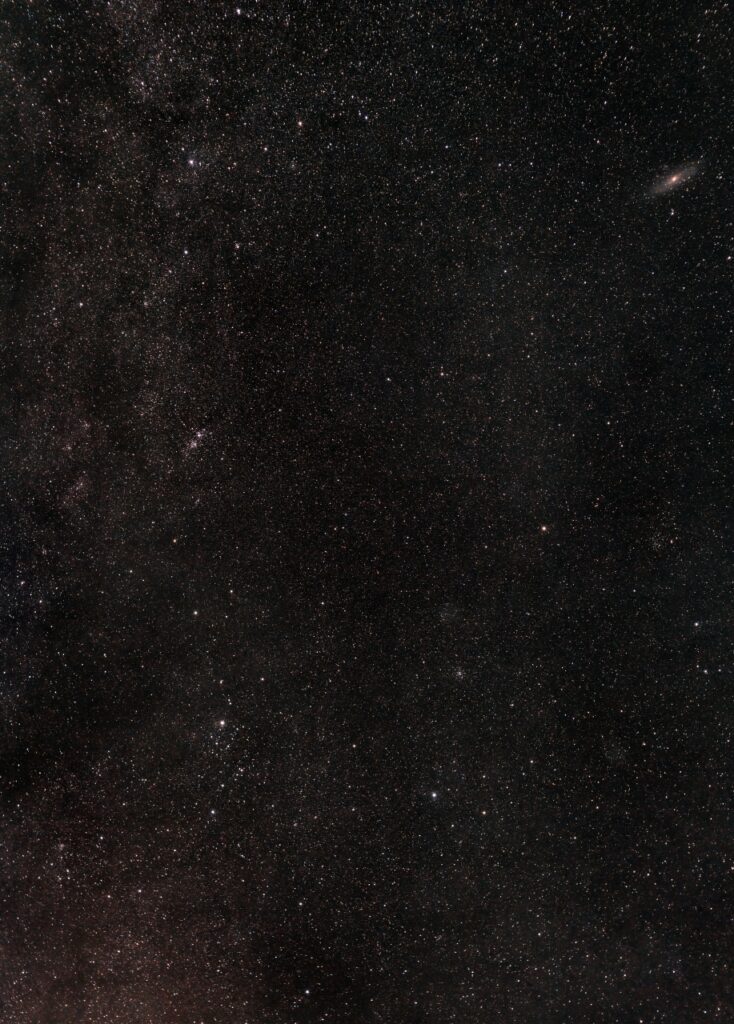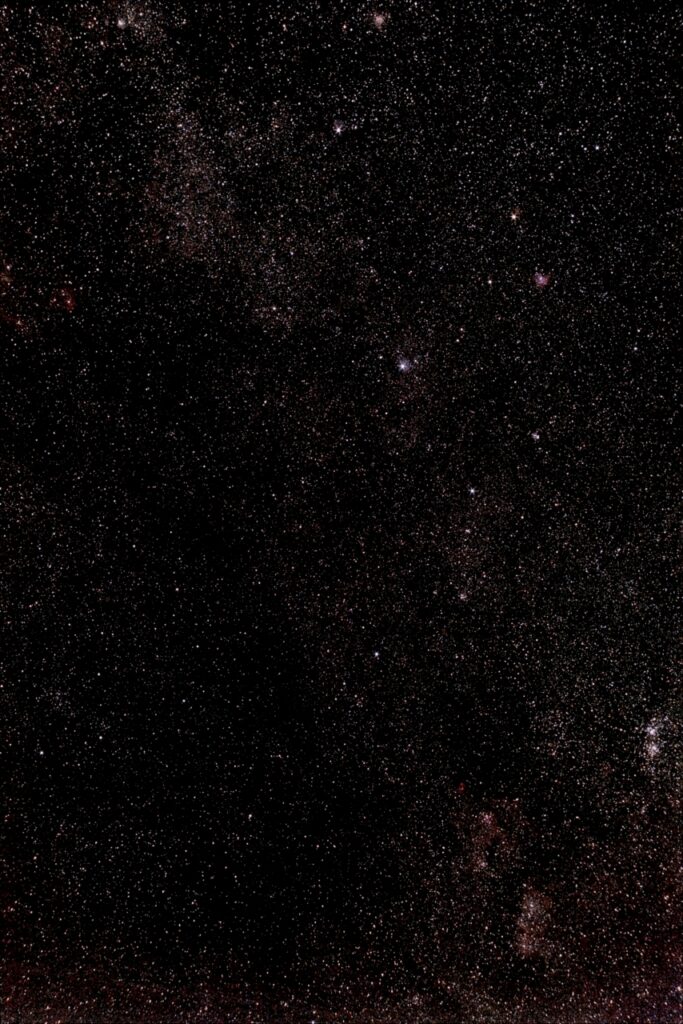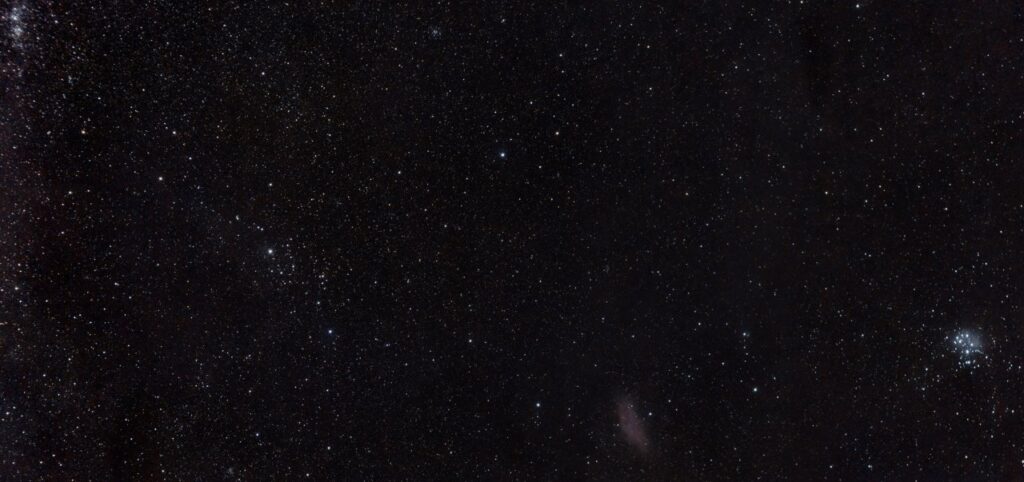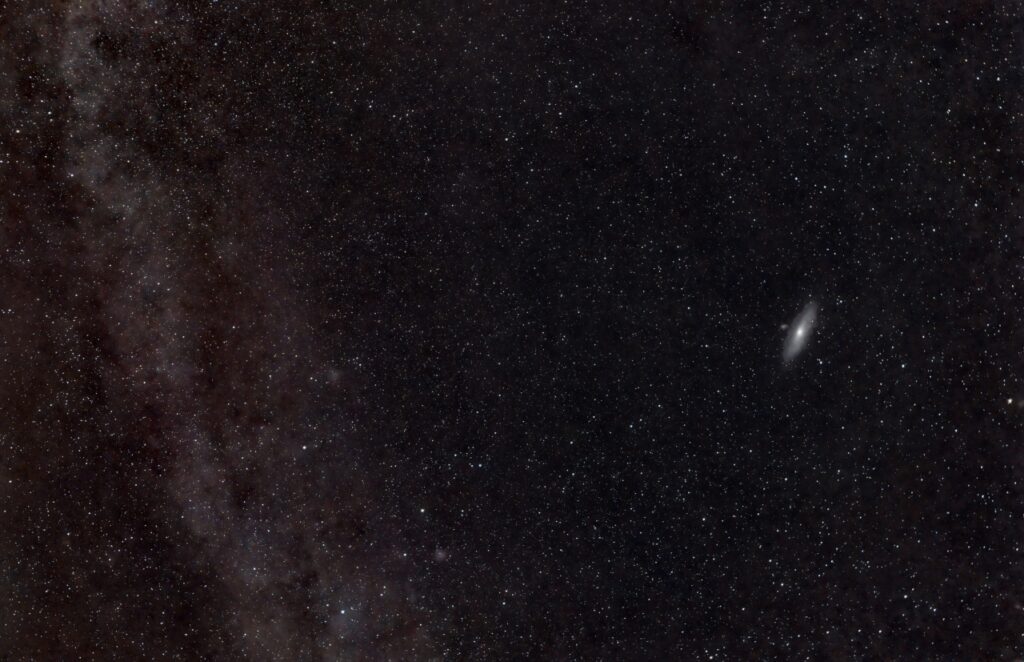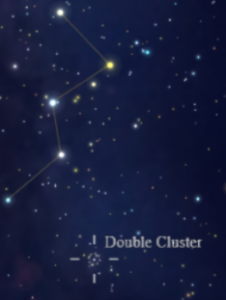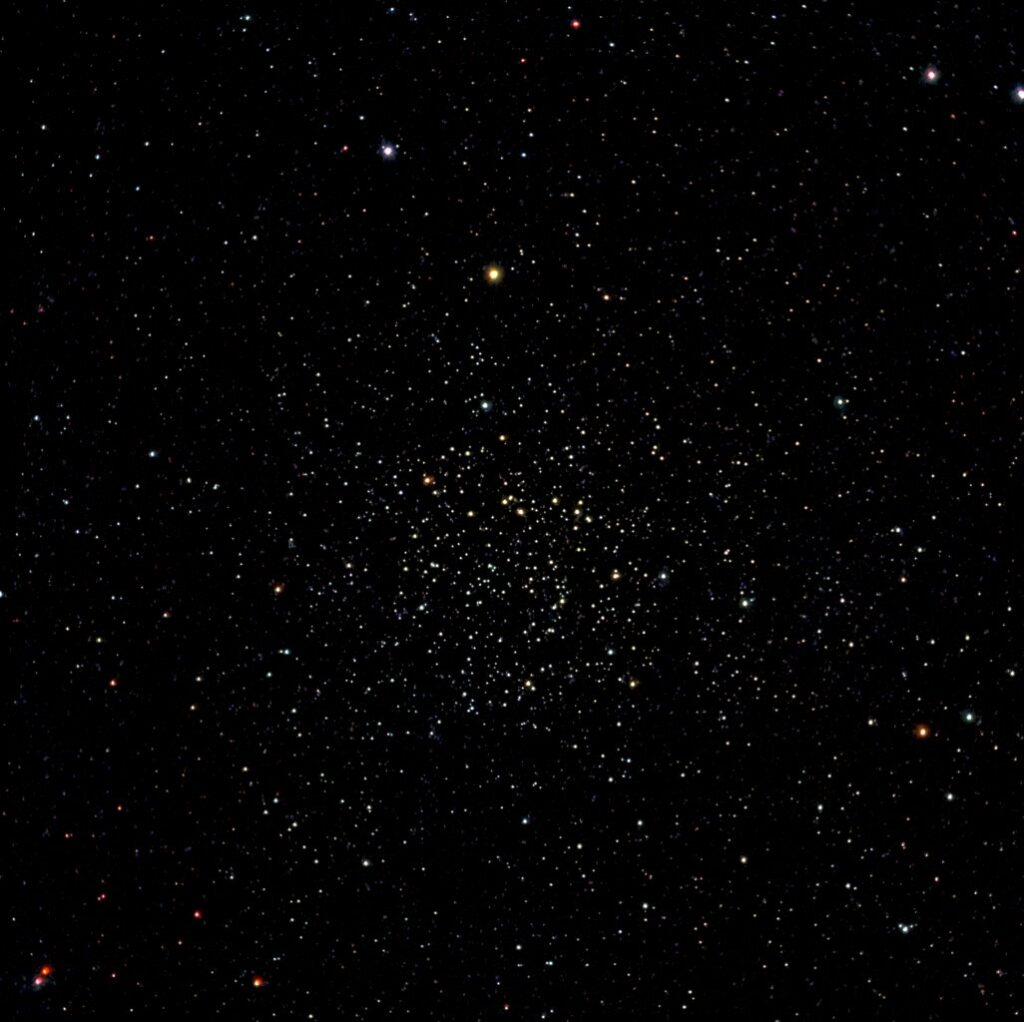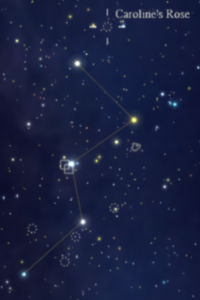The Night Sky from Cassiopeia through Perseus and Andromeda
click any image to showcase
The night sky surrounding the constellations of Cassiopeia, Perseus, and Andromeda is a celestial masterpiece, brimming with vibrant star fields, ancient galaxies, and shimmering clusters. Stretching across this part of the heavens, the Milky Way forms a silken pathway of light.
Cassiopeia, the elegant Queen, stands proudly with her distinctive W-shaped pattern. Her stars frame a stellar treasure: Caroline’s Rose (NGC 7789). This beautiful open cluster reveals delicate petals of starlight when viewed through a telescope, its dense sprinkling of stars forming an intricate, floral-like arrangement.
Just to the east lies Perseus, a bold warrior adorned with celestial riches. One of its crowning jewels is the Double Cluster (NGC 869 and NGC 884), a breathtaking pair of star clusters nestled against the dark backdrop of space. Their countless young, blue-white stars shimmer like scattered diamonds, creating one of the most mesmerizing sights in the night sky.
Continuing toward the east, the graceful form of Andromeda stretches across the sky, leading the way to one of the universe’s grandest wonders: the Great Andromeda Galaxy (M31). This majestic spiral galaxy, visible even to the naked eye on dark nights, floats like a ghostly ellipse amidst the stars. Through binoculars or a telescope, its luminous core and faint spiral arms become more pronounced, hinting at the billions of stars that reside within.
Together, Cassiopeia, Perseus, and Andromeda form a dazzling corridor of cosmic beauty, where ancient light meets the imagination of those who gaze skyward.

Wide Field Shots
click any image to showcase

The Double Cluster
The famous double cluster in Perseus has perhaps been known since pre-historic times, and was first cataloged by the Greek astronomer Hipparcos in 130 B.C. For unknown reasons, Messier did not include the Double Cluster in his famous catalogue.
These two clusters are a stunning sight in low power, wide field eyepiece. Each cluster is half a degree in diameter. NGC 869 is the more compressed of the two, and has over 200 white and bluish-white members. NGC 884 to the east has 175 mostly white and bluish-white stars. NGC 884 contains about 150 stars, and judging from its stellar population, is significantly older than NGC 869.
Both clusters are situated in the Perseus OB 1 association. At a distance of about 7000 light years, the clusters are only a few hundred light-years apart. They are both quite young, with NGC 869 being 5.6 million years old and NGC 884 at 3.2 million years old. Their hottest main sequence stars are of spectral type B0. By comparison, the Pleiades have an estimated age ranging from 75 million years to 150 million years.
Caroline's Rose

NGC 7789 is an open cluster that lies in Cassiopeia near the plane of our Milky Way galaxy. One of the major omissions from Charles Messier’s catalogue, it was discovered by Caroline Herschel in 1783. Her brother William Herschel included it in his catalog as H VI.30. This cluster is also known as “The White Rose” cluster or “Caroline’s Rose” because when seen visually, its loops of stars and dark lanes look like a swirling pattern of rose petals.
Uniformly spread over half a degree of sky, NGC 7789 is estimated to be 8,000 light-years distant. Its true diameter is therefore about 60 light-years. All the stars in the cluster were likely born at the same time, but the brighter and more massive ones have more rapidly exhausted the hydrogen fuel in their cores. The cluster’s brightest members are G and K orange giants with absolute magnitudes around -2. Such stars are highly evolved: indeed, NGC 7789 is estimated to be 1.6 billion years old. This group is very old for an open cluster, but far younger than any globular cluster in our galaxy.

The Great andromeda galaxy
The Great Andromeda Galaxy, Messier 31, is the nearest spiral galaxy to our own. Visible as a faint smudge on moonless nights, it is one of the farthest objects visible to the naked eye. As a mirror image of the Milky Way, this huge aggregation of stars, gas, and dust allows us to study all the features of our own galaxy that we cannot observe because we are inside it.
With an apparent magnitude of 3.4, the Andromeda Galaxy one of the brightest Messier objects. It is visible to the naked eye from areas with moderate light pollution, and can even be seen from urban areas with binoculars.
Although the apparent size of the Andromeda Galaxy is about 3 x 1 degrees – six times the size of the full Moon! – only the bright central region is visible to the naked eye.


